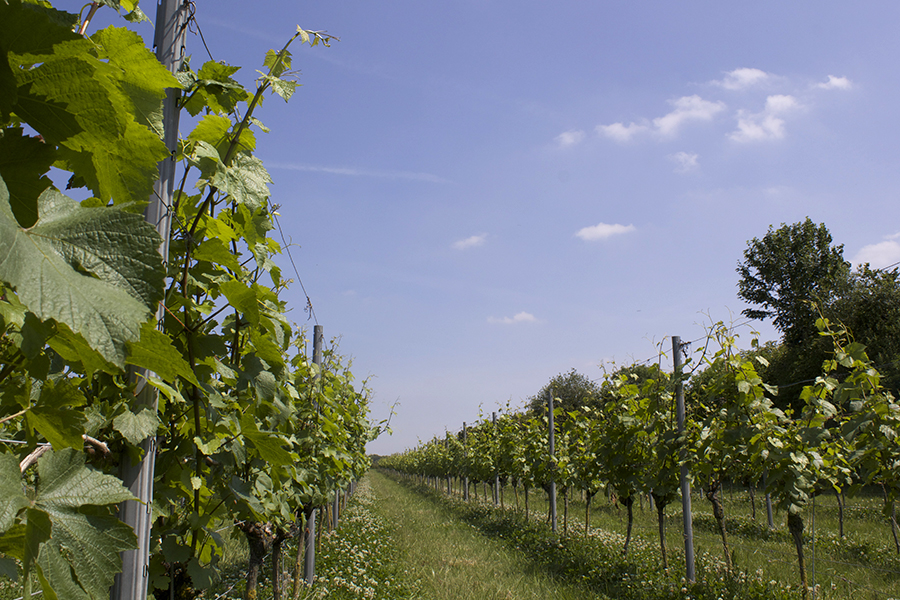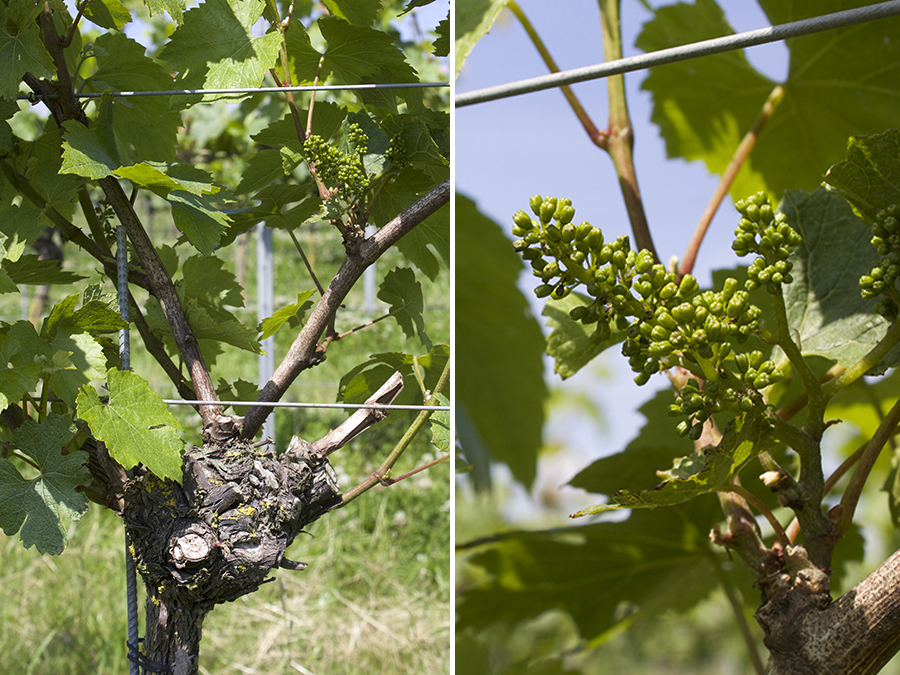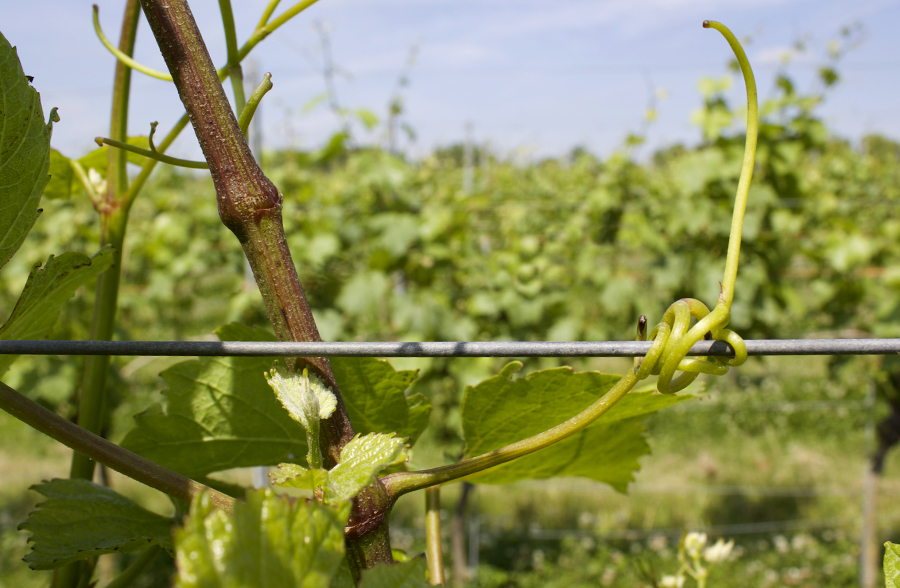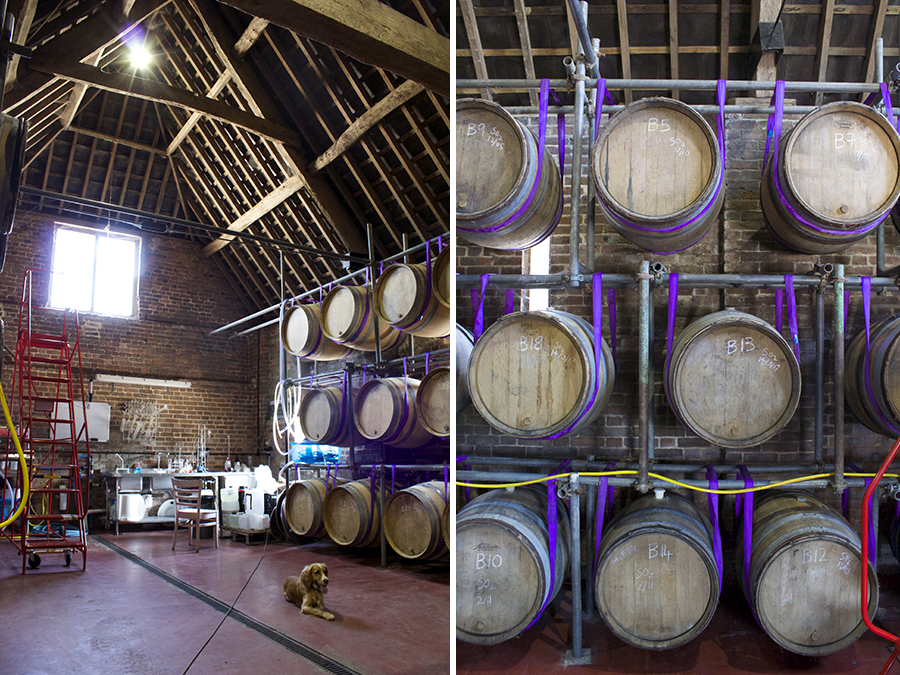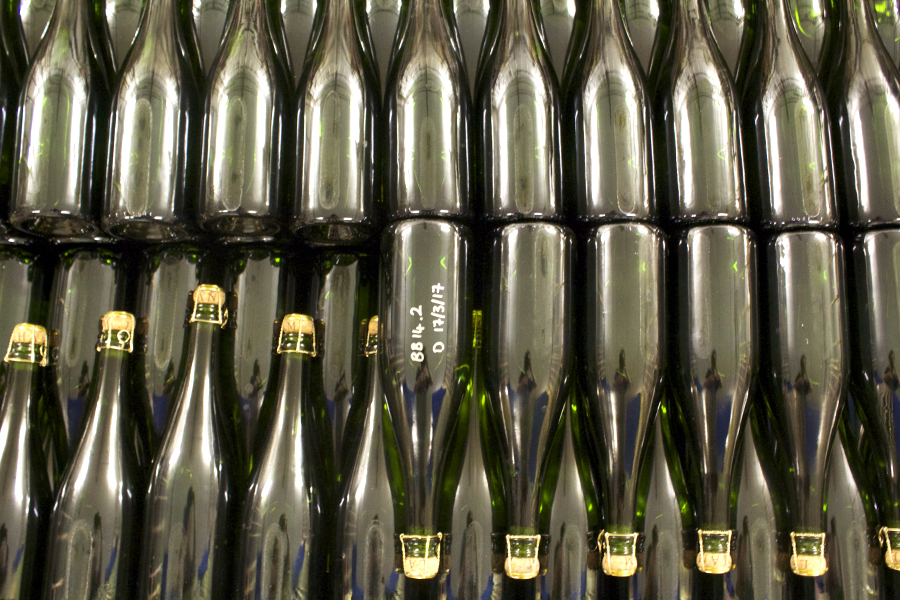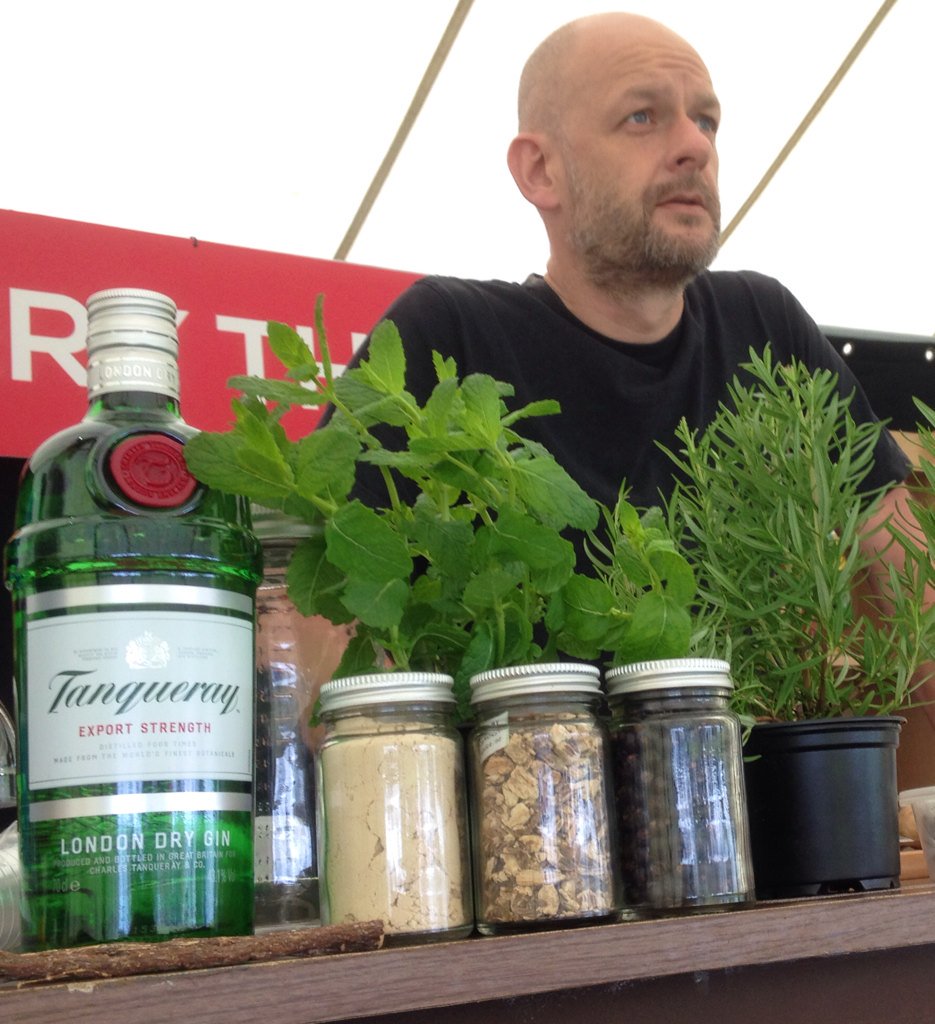Every summer we tramp up and down the land providing booze making demos, with a home grown twist, for punters eager to expand their drinks repertoire.* This year’s tour kicked off at RHS Hampton Court where we impressed the assembled masses with a close up look at some key gin ingredients, including a juniper tree, sticks of licorice root and Rich’s Bearded Iris before conjuring up a pair of tasty cocktails – recipes below.
Our summer supply of gin was kindly provided by Tanqueray – it’s our favourite of the widely available gins and a great example of the London Dry style, showing off the juniper with a minimum of other complimentary botanicals. It’s also a great base for any number of drinks, including our cocktails.
We each made a home grown cocktail, asking the crowds to vote for their favourite**, and have reproduced the recipes below. Try them out and let us know which you think is best…
Grow you own cocktail recipes
Nick’s ‘cool as a minty cucumber’ cocktail
Nothing can be more refreshing than an ice cold gin cocktail infused with the fresh summer flavours of mint, cucumber and lime. And to make it couldn’t be easier. You’ll need (per serving)…
• 50ml gin
• Six to ten mint leaves
• A slice of cucumber the thickness off a thumb
• Half a lime
• Tonic water
• Ice
To make, simply put the gin into a small jug or cocktail shaker, add the mint leaves (scrunching them up first) and the cucumber (chopping it roughly first). Squeeze in the juice from the lime, then bung in the de-juiced rind for good measure.
If you’re using a jug, bash it all about a bit with a spoon; if you’re using a shaker, give it a vigorous shake then let it sit for a few minutes while filling a tall glass or tumbler with ice cubes. Pour in the gin and top up with tonic (we suggest a ratio of 1 gin to 2 tonic, but you can adjust for your own preference). If you’re serving this to someone special, top with a sprig of mint and thin slice of cucumber. If it’s for yourself, don’t bother – they’ll only get in the way.
Enjoy.
+++++
Rich’s rhubarb collins
Make it a rhubarb boozeday with Rich’s cocktail, which first requires making a simple syrup.
For the syrup…
• 600g rhubarb
• 200g caster sugar
• 30g grated ginger (optional)
• 500ml water
Chop up the rhubarb into 4cm pieces and lob the above ingredients into a pan. Bring to the boil then simmer for approximately 15 minutes with the lid on, until the rhubarb has turned into pulp. Carefully pour the hot mixture into a pitcher, and then strain through a muslin cloth and funnel into your chosen bottles.
For the cocktail…
• 50ml gin
• 25ml rhubarb syrup (or 50ml for those with a sweet tooth)
• 25ml freshly squeezed lemon juice
Put the ingredients into a cocktail shaker, along with a 5-6 large ice cubes. Give it a good old shake before straining it into a tall glass half-filled with ice. Top up with soda water. Drink.

Rich in action at RHS Hampton Court’s cookery stage
*Or, more likely, eager to snaffle some free samples
**They were far too polite to express a preference, generally hailing both as tasty successes
The post Enjoy these two easy home grown gin cocktails appeared first on Two Thirsty Gardeners.
from Two Thirsty Gardeners http://twothirstygardeners.co.uk/2017/07/enjoy-two-easy-home-grown-gin-mint-rhubarb-cocktails/
